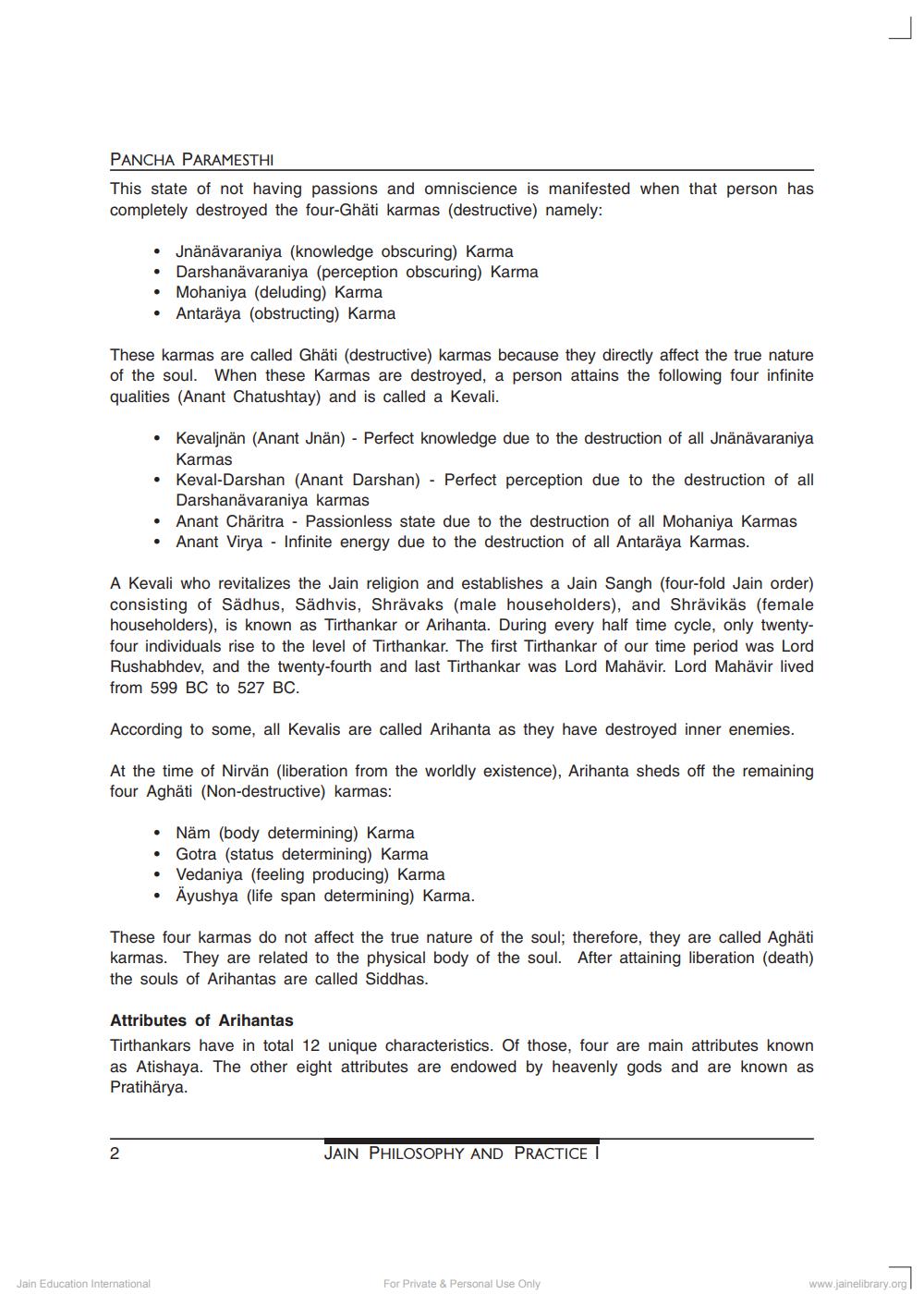Book Title: $JES 302 Jain Philosophy Level 3 Book Author(s): JAINA Education Committee Publisher: JAINA Education Committee View full book textPage 2
________________ PANCHA PARAMESTHI This state of not having passions and omniscience is manifested when that person has completely destroyed the four-Ghäti karmas (destructive) namely: Jnänävaraniya (knowledge obscuring) Karma Darshanävaraniya (perception obscuring) Karma Mohaniya (deluding) Karma Antaraya (obstructing) Karma These karmas are called Ghäti (destructive) karmas because they directly affect the true nature of the soul. When these Karmas are destroyed, a person attains the following four infinite qualities (Anant Chatushtay) and is called a Kevali. • Kevaljnän (Anant Jnän) - Perfect knowledge due to the destruction of all Jnänävaraniya Karmas Keval-Darshan (Anant Darshan) - Perfect perception due to the destruction of all Darshanävaraniya karmas • Anant Charitra - Passionless state due to the destruction of all Mohaniya Karmas • Anant Virya - Infinite energy due to the destruction of all Antaraya Karmas. A Kevali who revitalizes the Jain religion and establishes a Jain Sangh (four-fold Jain order) consisting of Sädhus, Sädhvis, Shrävaks (male householders), and Shrävikäs (female householders), is known as Tirthankar or Arihanta. During every half time cycle, only twentyfour individuals rise to the level of Tirthankar. The first Tirthankar of our time period was Lord Rushabhdev, and the twenty-fourth and last Tirthankar was Lord Mahävir. Lord Mahävir lived from 599 BC to 527 BC. According to some, all Kevalis are called Arihanta as they have destroyed inner enemies. At the time of Nirvän (liberation from the worldly existence), Arihanta sheds off the remaining four Aghäti (Non-destructive) karmas: • Näm (body determining) Karma • Gotra (status determining) Karma • Vedaniya (feeling producing) Karma • Ayushya (life span determining) Karma. These four karmas do not affect the true nature of the soul; therefore, they are called Aghäti karmas. They are related to the physical body of the soul. After attaining liberation (death) the souls of Arihantas are called Siddhas. Attributes of Arihantas Tirthankars have in total 12 unique characteristics. Of those, four are main attributes known as Atishaya. The other eight attributes are endowed by heavenly gods and are known as Pratihärya. JAIN PHILOSOPHY AND PRACTICE I Jain Education International For Private & Personal Use Only www.jainelibrary.orgPage Navigation
1 2 3 4 5 6 7 8 9 10 11 12 13 14 15 16 17 18 19 20 21 22 ... 141
